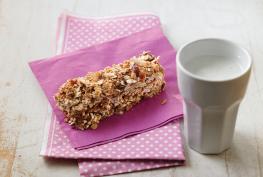The food choices you make at work can impact your overall health. Learn how to make healthy choices at work.
On this page
Making healthy choices at work matters
You make many choices about what you eat and drink every day at work. Most people will eat a meal and have multiple snacks and drinks throughout their work day. This gives you many chances to make healthy food choices.
Making healthy choices can be difficult since many foods and drinks are sold or available in the workplace. These options can influence your eating habits in both positive and negative ways.
How to make healthy choices at work
You can use these ideas to make healthy choices.
Plan ahead
Include your meals and snacks for work in your meal plan. Knowing what you’re going to eat at work and preparing some of the items in advance is helpful. It can save you time and keep you organized, even on busy days.
Keep healthy items available
The foods you have available are the foods you are most likely to eat.
Even if you plan ahead, you may forget to pack something to eat or not pack enough some days. Keep a small amount of healthy foods available at work.
Try:
- rolled oats
- canned soup
- whole grain crackers
- canned fish, such as tuna
- nut butters, such as peanut and almond
- fruit with a longer shelf life, such as apples
- nuts and seeds, such as almonds and cashews
It can also be helpful not to keep highly processed foods or sugary drinks at work.
Get creative
You may not have a fridge or space to prepare a meal at work, which can limit your meal options. Bring a small cooler bag or ice pack with you instead to keep fresh foods cold.
Other helpful items to have available include:
- a cloth napkin
- reusable cutlery
- a small container of reusable dishes
Think about your drink
Having a specialty coffee or tea to start your shift or during your break can be a nice treat. However, many specialty drinks contain high amounts of sodium, sugars or saturated fat. Instead of these drinks, try:
- water flavoured with fruit or fresh herbs
- plain coffee, with a sprinkle of cinnamon
- unsweetened herbal teas, either hot or over ice
Choose healthier menu options
If you eat at your work cafeteria, remember to follow the healthy eating recommendation to help you make a healthy choice when eating out. Many people think of eating out as a treat. However, if you do it often enough it’s important to think about how it fits into your eating pattern.
Take time to eat
If possible, eat your meal away from your desk or place of work. This can help ensure you take the time to eat and are able to focus on your meal. Ask a co-worker to join you and eat together to make it more enjoyable.
Be mindful of your schedule
Shift work often means you work at different hours of the day or overnight. This can impact your eating and sleeping patterns, especially if your shift schedule changes from week to week. As a result, you may find it difficult to make healthy food choices.
Think about your work schedule and plan when you can have regular meals and snacks throughout the day.
Creating a work environment that supports healthy eating habits
Workplaces can promote healthy eating habits and positively affect their employees’ health by improving the food environment in the workplace.
Food and drinks are readily available in many workplaces. You can often find these items served or sold:
- at meetings
- at fundraisers
- in vending machines or cafeterias
Workplaces can create a healthy food environment by:
- making sure healthy foods and drinks are readily available
- limiting the promotion and sale of foods like sugary drinks and sweets
Use these strategies when thinking about all of the different places food is offered or sold.
Workplace meetings and conferences
If you are hosting a meeting or conference and decide to serve food:
- offer healthy options for snacks, such as:
- whole fruit
- nuts and seeds
- cut up vegetables and dip
- make water available by placing pitchers around the table
- if possible, cut down on waste by offering reusable:
- cups
- plates
- cutlery
- compost and recycle whenever possible to decrease waste from:
- food
- food packaging
- disposable dishes
Fundraisers
If you are planning a fundraiser:
- consider the ways you can fundraise, such as:
- selling coffee or tea bags
- selling vegetables and fruits
- having a garage sale with clothes, books and household items that staff donate
- organizing a workplace event that staff or teams donate to or raise funds for in order to participate in, such as:
- a walk or run
- dress down days
- a volleyball or softball tournament
- when food is sold, assess the options available and make sure healthy foods or snacks are emphasized
Work parties and events
If you are planning a work party or event:
- ask staff for suggestions of healthy food and drink options they would enjoy
- consider combining multiple events where food is usually served, such as birthdays and holidays, into one event
- acknowledge that staff may wish to have certain foods during special events and serve these foods along with other healthy options
Retail food, like cafeterias and vending machines
If you are trying to make food and drinks sold at your work healthier:
- consider no longer offering sugary drinks and sweets for sale
- have healthy food and drink options available and make them affordable for staff
- work with the service provider to assess the current food and drink options
Consider creating a food and drink policy in your workplace that:
- limits the sale or offering of:
- sugary drinks
- highly processed foods high in sodium, sugars or saturated fat
- provides suggestions for healthy foods and drinks to sell and offer
- promotes healthy eating habits by:
- providing staff enough time to eat meals
- providing a safe and clean space for staff to eat their meals away from their workstation
- provides nutrition information for foods sold or offered, including:
- allergen information for priority allergens
- nutritional information on items that don’t have a food label
This can make it easier for those who are responsible for ordering food and drinks to know what to buy. If your workplace has any external food providers, share the policy with them. This will help them better understand what foods and drinks your workplace is looking for.
Make a healthy choice
What you eat on a regular basis matters for your health.
- Choose foods that have little to no added sodium, sugars or saturated fat.
- Compare the nutrition facts table on foods to choose products that are lower in sodium, sugars or saturated fat.






